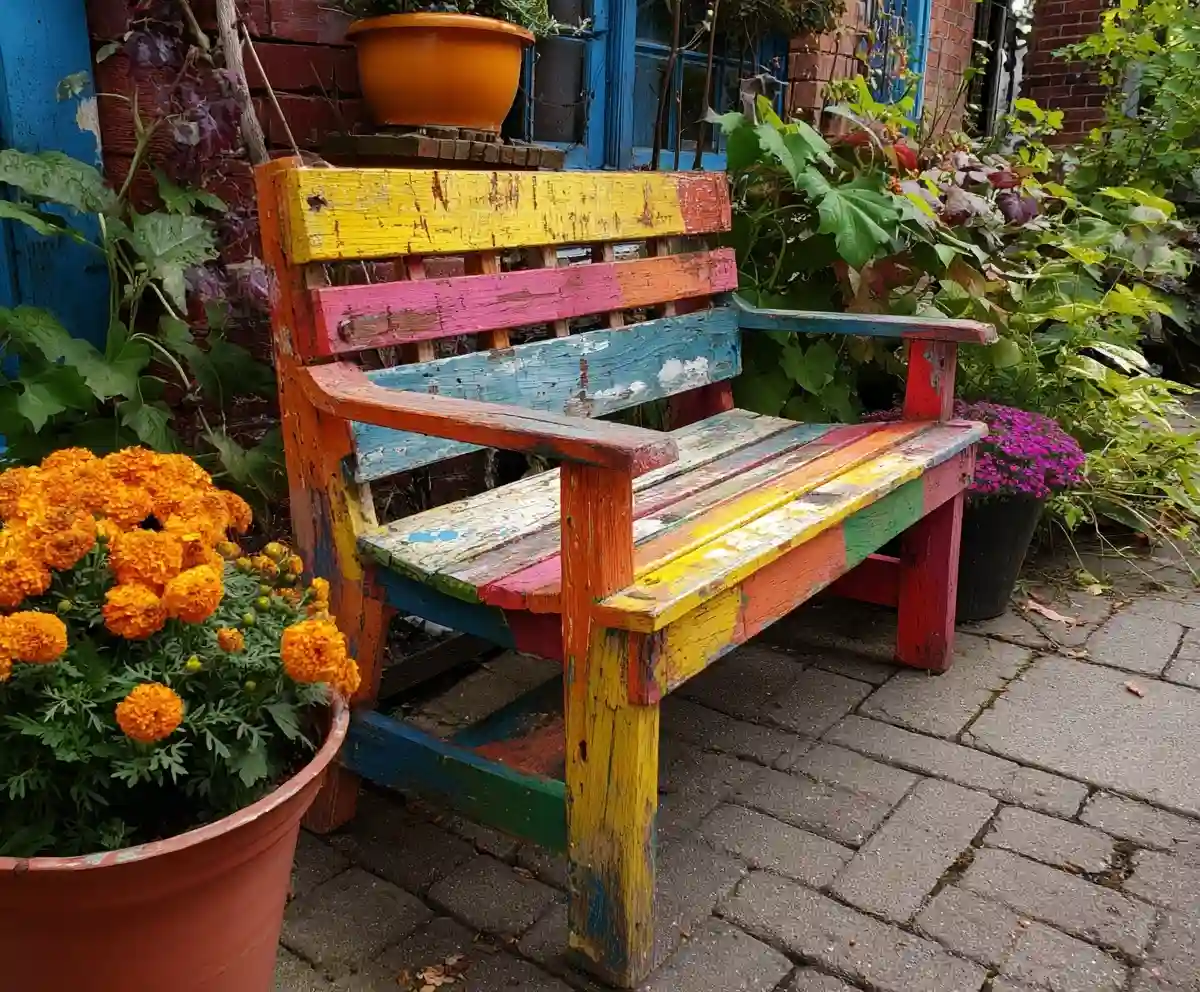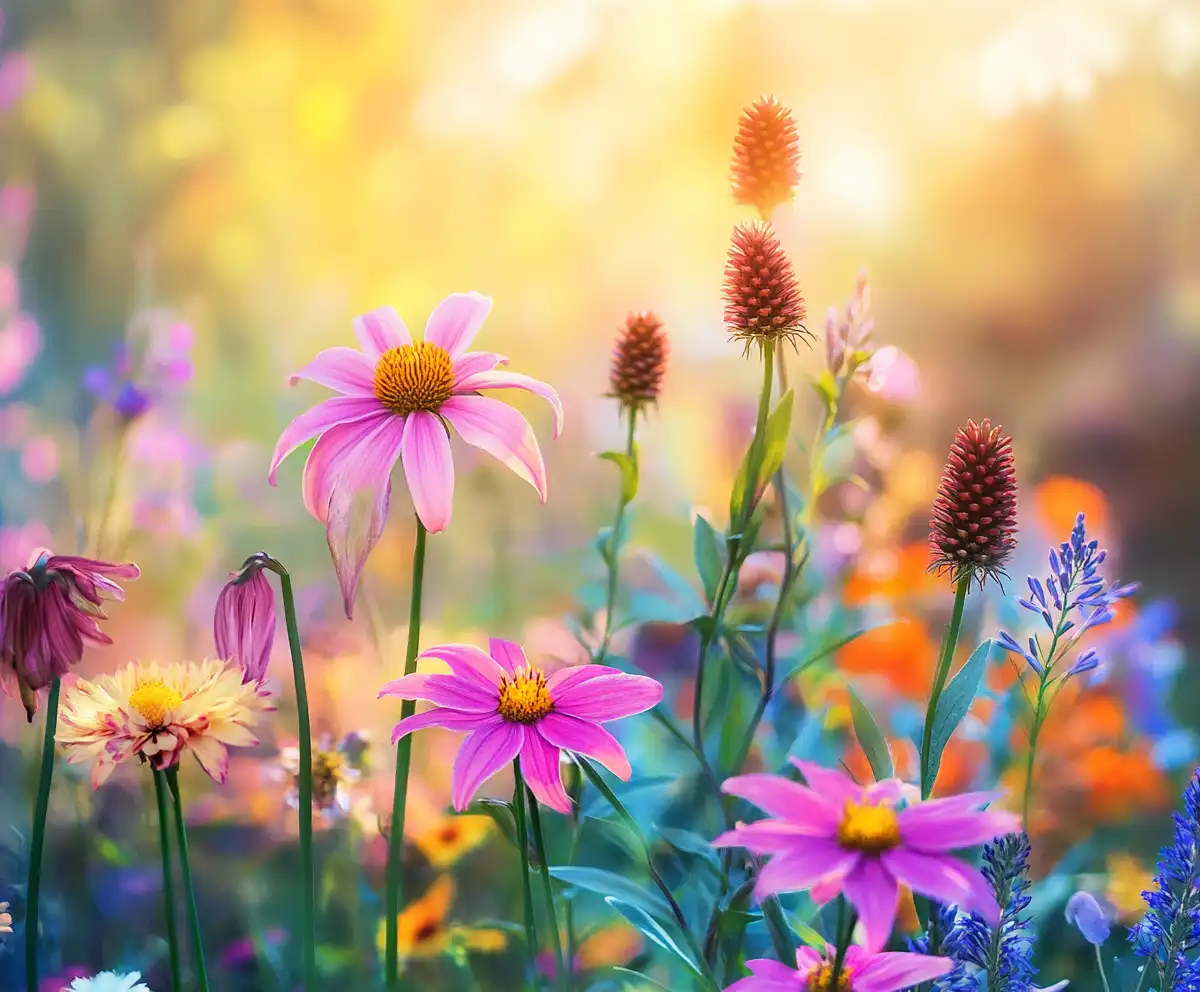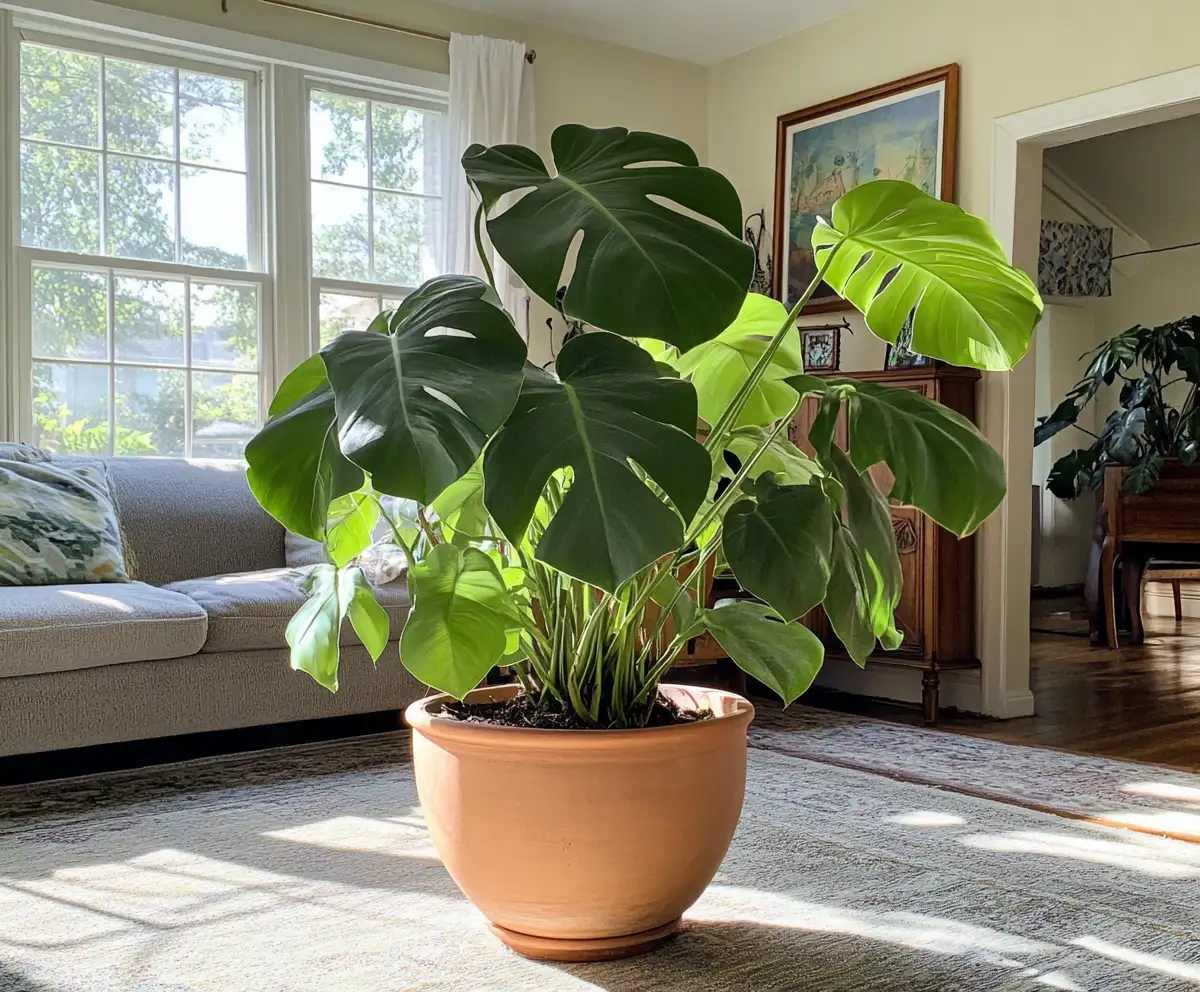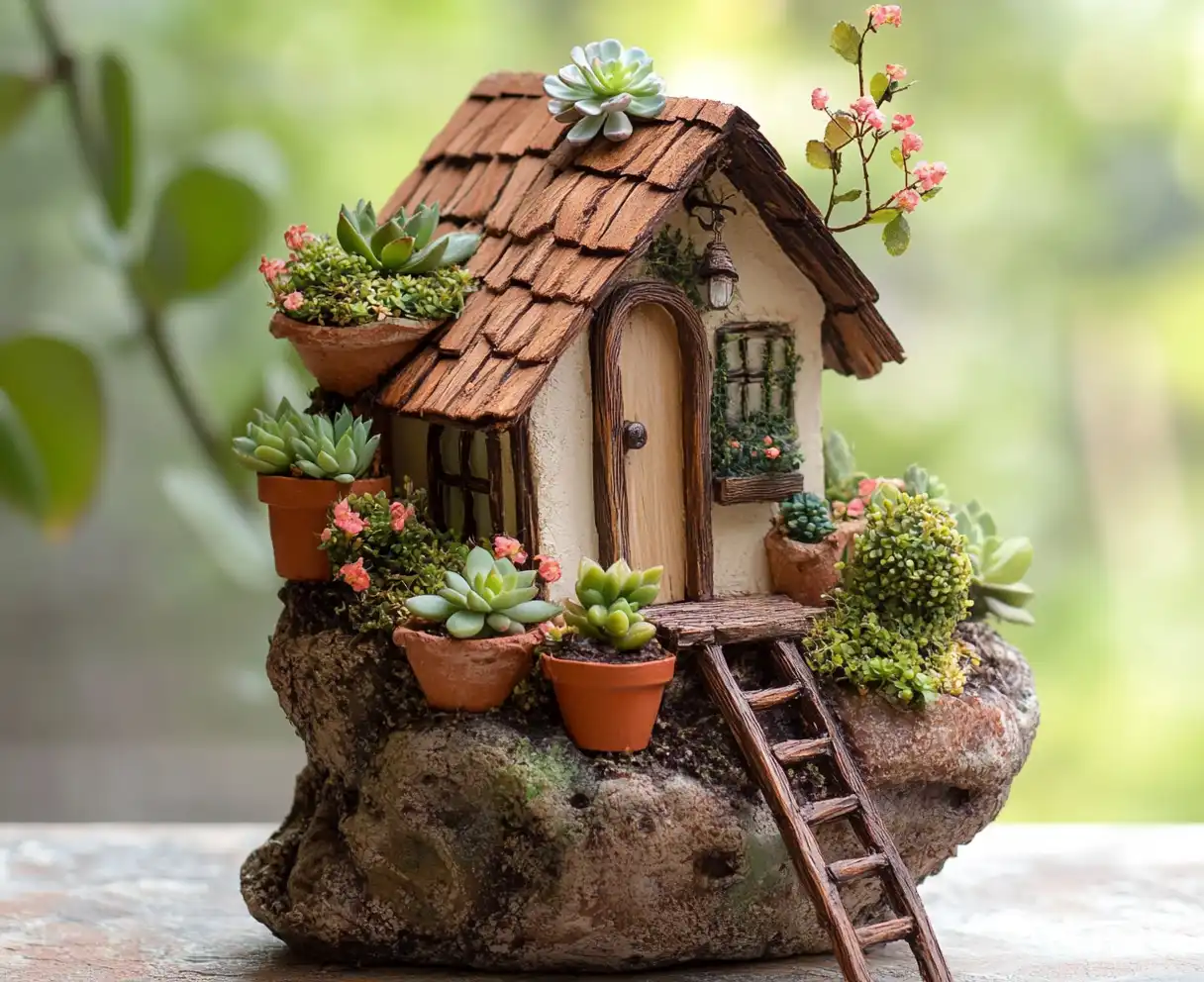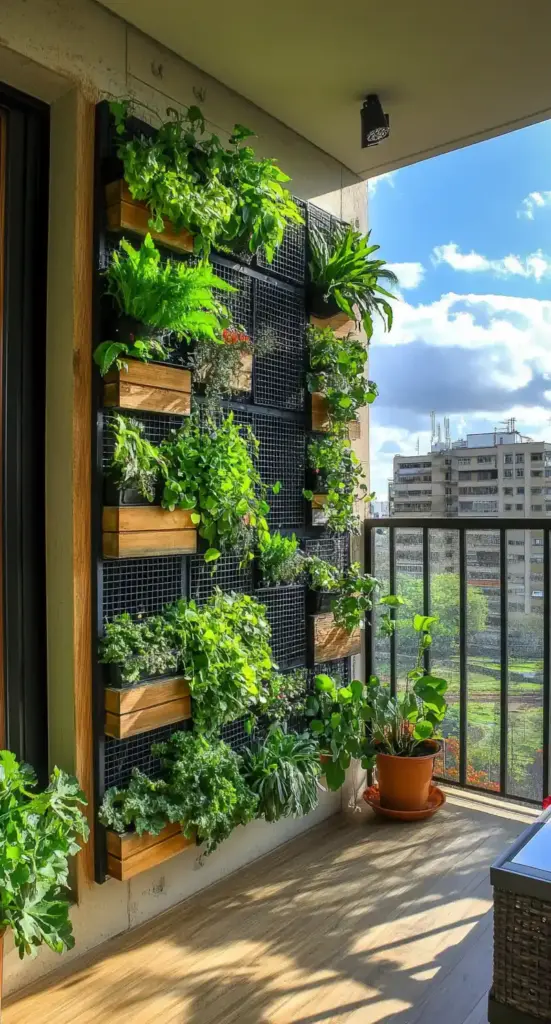Creating a beautiful and sustainable garden doesn’t require a professional landscaper—just a little creativity, a dash of time, and the right DIY trellis ideas to get started. Whether you’re interested in adding vertical greenery or building a charming diy trellis to support climbing plants like clematis vines or cucumbers, these approachable garden projects offer more than just good looks. They boost eco-friendliness, inspire hands-on creativity, and help cultivate a landscape that truly mirrors your personal style.
Whether you’re making the most of a compact balcony or designing a sprawling backyard oasis, incorporating a thoughtfully crafted diy trellis or raised bed can transform your space into a lush, inviting sanctuary. Ready to get your hands dirty? Here are six DIY garden structures you can start building today.
Table of Contents
1. Build a Breathtaking Vertical Garden Wall
A vertical garden wall is perfect for gardeners looking to maximize greenery in small or underutilized spaces. It’s both a space-saving solution and an artistic statement.
Tips to Succeed:
- Pick the right spot: Choose a sunny, accessible wall that gets good light and is easy to water.
- Use sturdy materials: Invest in a strong frame, waterproof backing, and quality potting mix.
- Plant wisely: Select greenery with similar water and light requirements—herbs, ferns, and succulents work well.
- Water smartly: Incorporate drip irrigation or a self-watering system to maintain healthy plants.
This living wall will not only purify the air and attract pollinators, but it’ll also become a conversation starter.
2. Craft a Charming DIY Trellis for Climbing Plants
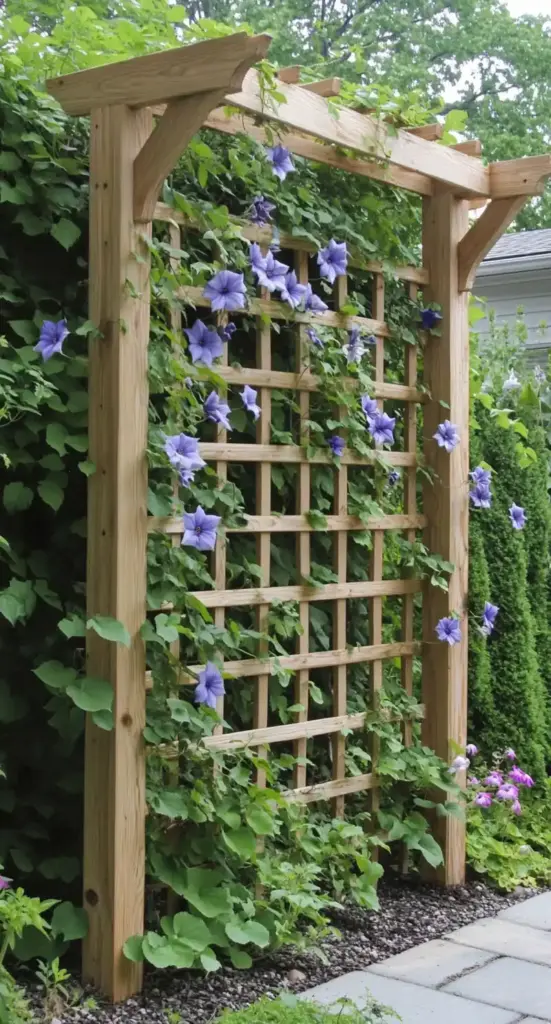
A well-designed diy trellis adds vertical interest and functional beauty to your garden. It’s a versatile addition that supports climbing plants like clematis, sweet peas, or cucumbers, while enhancing your overall garden structure.
Follow these best practices:
- Choose weather-resistant materials: Cedar, bamboo, or powder-coated metal are durable and stylish.
- Tailor the design to your space: Opt for an arched, fan-shaped, or lattice-style trellis that matches your garden aesthetic.
- Ensure stability: Anchor your trellis deep in the soil or attach it securely to a fence or wall to prevent tipping.
- Add flair: Personalize it with colorful paint, decorative shapes, or integrated planter boxes for added interest.
With this diy trellis project, you’ll blend form and function beautifully—offering your climbing plants the support they need while making your garden stand out.
3. Design an Eye-Catching Living Garden Arch
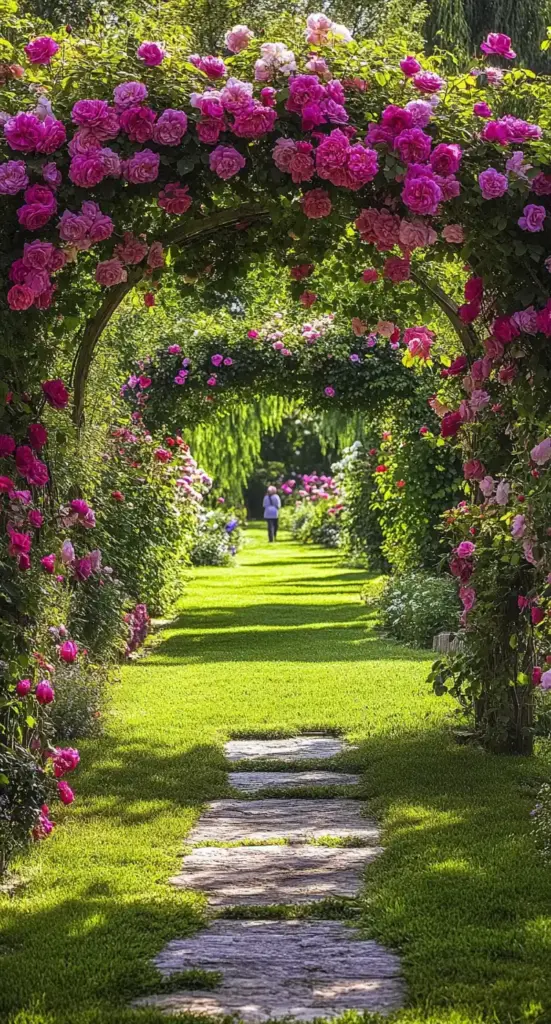
A living garden arch brings a sense of drama and elegance to any outdoor space. Whether you’re marking an entryway or creating a floral focal point, an arch covered in climbing plants is sure to impress.
Design tips for a standout arch:
- Use strong materials: Choose wrought iron, wood, or galvanized metal that can hold the weight of mature vines.
- Pick stunning plants: Roses, jasmine, or morning glories create lush coverage and delightful fragrance.
- Add magical touches: String fairy lights or hang solar lanterns to make your arch glow in the evenings.
- Layer for seasonal interest: Combine perennials for year-round structure with annuals for bursts of color.
When thoughtfully designed, a garden arch offers more than a path—it becomes a living sculpture that welcomes you in style.
4. Build a Rustic Raised Garden Bed
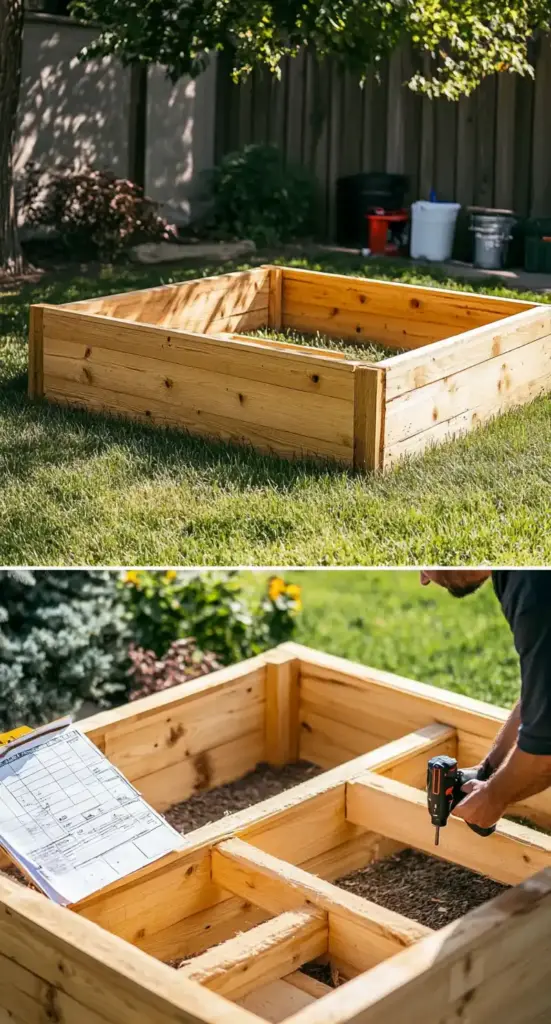
Want to grow your own veggies or flowers with less bending and better soil control? A raised garden bed is your answer. Bonus: It adds visual charm with its clean lines and rustic feel.
Steps to build it right:
- Location is key: Choose a flat, sunny spot with 6–8 hours of light daily.
- Use natural wood: Untreated cedar or pine resists rot and is safe for edibles.
- Size it smartly: A common size is 4′ x 8′ for easy reach across the bed.
- Secure it well: Screw the boards tightly and level the bed to ensure stability.
A raised bed is a practical way to improve drainage, protect your plants, and keep your garden tidy—and it’s a perfect complement to your diy trellis.
5. Construct a Whimsical Fairy Garden Space
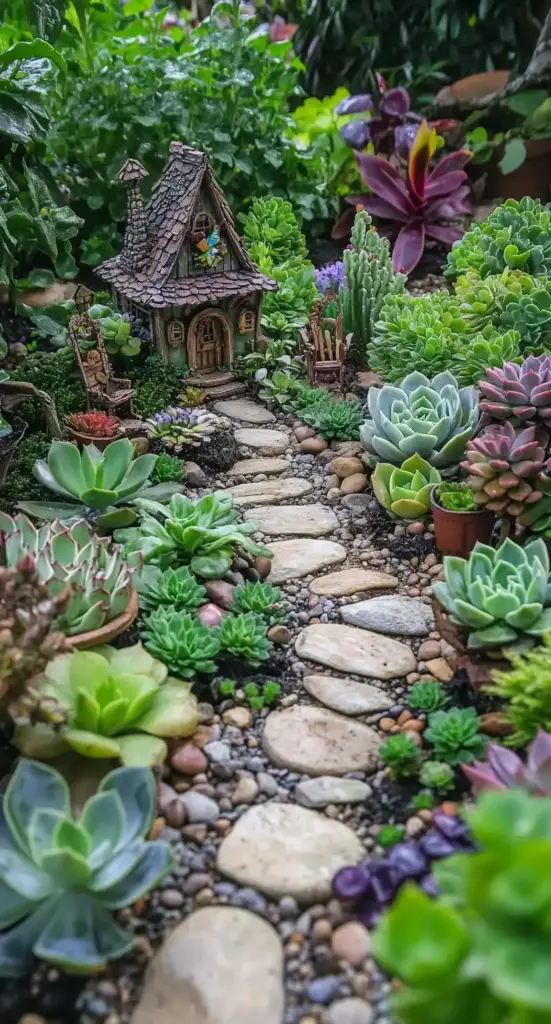
For gardeners of all ages, a fairy garden is a playful, imaginative escape nestled within your landscape. These miniature scenes invite wonder while showcasing your creativity in a small-scale setup.
How to bring your fairy garden to life:
- Pick a magical theme: Go with enchanted forest, seaside escape, or woodland village to guide your design choices.
- Choose miniature plants: Dwarf ferns, baby’s tears, and low-growing succulents suit the scale and add lush greenery.
- Add tiny details: Include fairy houses, pebble paths, small furniture, and even water features for realism and charm.
- Light it up: Use solar-powered fairy lights or lanterns to cast a soft evening glow and enhance the magical vibe.
A fairy garden is a low-maintenance project that can be tucked into a corner of your yard, a planter, or even alongside a diy trellis, offering a delightful surprise for guests and gardeners alike.
6. Assemble a Unique Succulent Planter Box
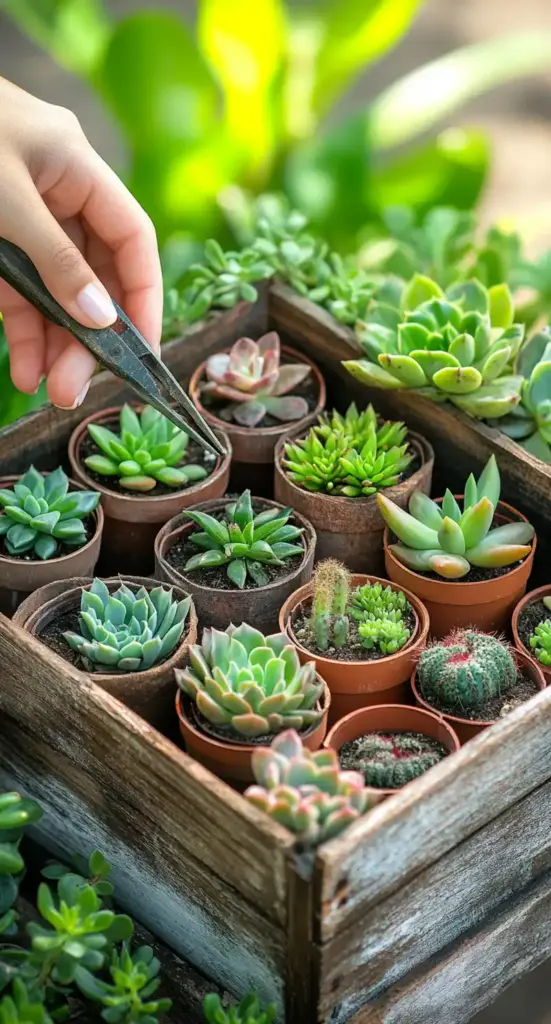
Succulents are the perfect plants for gardeners who love color, texture, and minimal upkeep. A custom succulent planter box showcases these hardy plants in a sleek, design-forward way.
Key tips for standout succulent boxes:
- Pick the perfect container: Wooden crates offer a rustic look, while ceramic or metal boxes add modern flair.
- Use proper soil: Succulents need well-draining soil to prevent root rot—cactus mix works best.
- Design with contrast: Mix rosette-shaped echeveria with trailing sedum or spiky haworthia for a dynamic arrangement.
- Arrange with purpose: Start with taller succulents at the back and layer shorter varieties up front to create depth.
Succulent planters can be placed on patios, along pathways, or near your diy trellis for a layered, lush look that thrives in sun-drenched spots.
Frequently Asked Questions (FAQ)
What is a DIY trellis and why should I build one?
A DIY trellis is a handmade garden structure that supports climbing plants like beans, roses, or vines. Building one yourself allows you to customize the size, materials, and style to perfectly match your garden’s layout and aesthetics—plus it’s a rewarding, budget-friendly project.
What materials are best for a DIY trellis?
Durable, weather-resistant materials like cedar wood, bamboo, metal rods, or PVC piping are ideal. Each has its advantages—wood offers a rustic look, while metal is long-lasting and modern.
How do I secure my DIY trellis so it doesn’t fall over?
Ensure stability by anchoring the trellis deep into the ground or fastening it to a wall or raised bed. Use concrete footings or metal brackets for added support, especially in windy areas or when growing heavier plants.
Which plants grow best on a trellis?
A wide range of plants thrive when supported by a diy trellis, from fragrant ornamentals to productive vegetables. Popular choices include climbing roses, vibrant clematis vines, sweet peas, and morning glories—ideal for gardeners seeking colorful vertical displays. If you’re growing food, options like cucumbers and pole beans also perform exceptionally well on a diy trellis.
Choose your plants based on local climate, available sunlight, and whether your garden goals lean more toward ornamental beauty or edible harvests. A thoughtfully chosen diy trellis plant pairing brings both function and flair to your outdoor space.
Can I use a trellis in a container garden?
Absolutely! A compact diy trellis works wonderfully in container gardens, especially for supporting climbing vegetables like cucumbers or flowering vines like clematis. This makes them ideal for balconies, patios, or small-space gardening. When using a diy trellis in a container, make sure the pot is deep, wide, and heavy enough to stabilize the structure and prevent tipping.
A well-anchored diy trellis not only supports vertical growth but also helps maximize your limited gardening space while adding vertical interest to your setup.
What size should a DIY trellis be?
The ideal size of a diy trellis depends entirely on the type of plant you’re growing. For lightweight climbers or small vines, a compact diy trellis around 3–4 feet tall is usually sufficient. However, for more vigorous growers like climbing roses or tomatoes, you’ll want a more robust trellis reaching 6–8 feet—or even taller.
When designing your diy trellis, always account for the plant’s mature size and growth habits. A well-planned diy trellis ensures healthy development, prevents overcrowding, and adds long-term structure to your garden.
Do trellises need maintenance?
Yes, especially wooden ones. Check annually for rot, loose joints, or rust if using metal. Repainting or resealing helps extend the life of your diy trellis and keeps your garden looking fresh.
Conclusion
These six DIY garden projects—ranging from practical builds like a diy trellis to whimsical spaces like fairy gardens—have the power to completely transform your outdoor space. Not only are they budget-friendly and eco-conscious, but each project adds a unique personality to your garden. Whether you’re eager to support climbing plants with a diy trellis, start a vegetable garden to grow your own food, or bring smiles with playful miniature landscapes, you’ll find a living garden idea here that suits your style and space.
So grab your tools, let your imagination run wild, and begin building a garden oasis that reflects both creativity and intention. From the first diy trellis frame to the final decorative detail, each step brings you closer to a greener, more beautiful home.
🌿 Love gardening inspiration? Follow me on Pinterest for bold plant ideas, tips, and seasonal color!
More Posts

